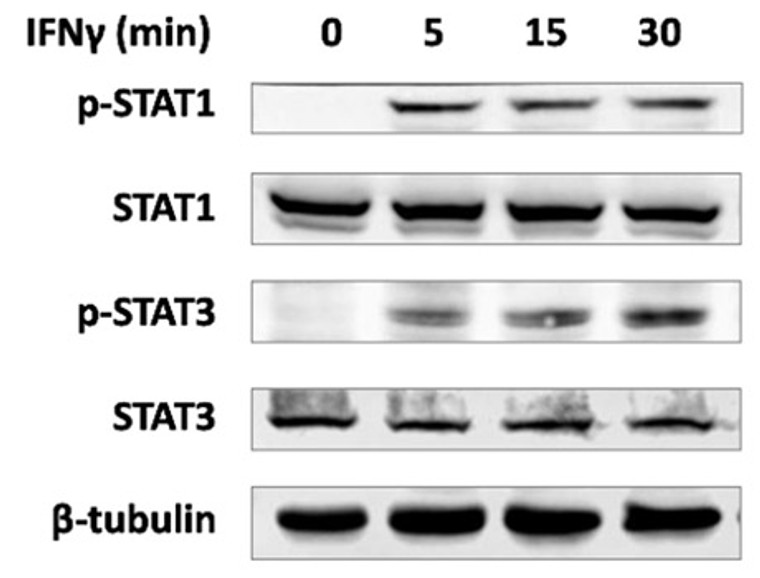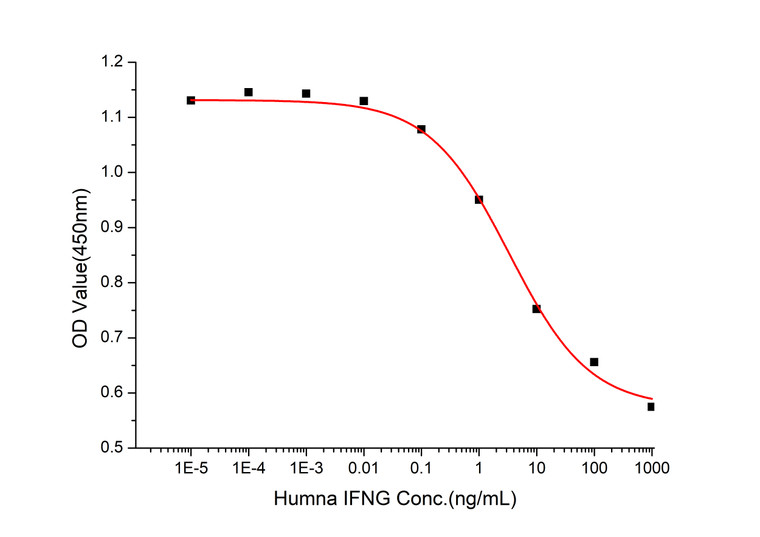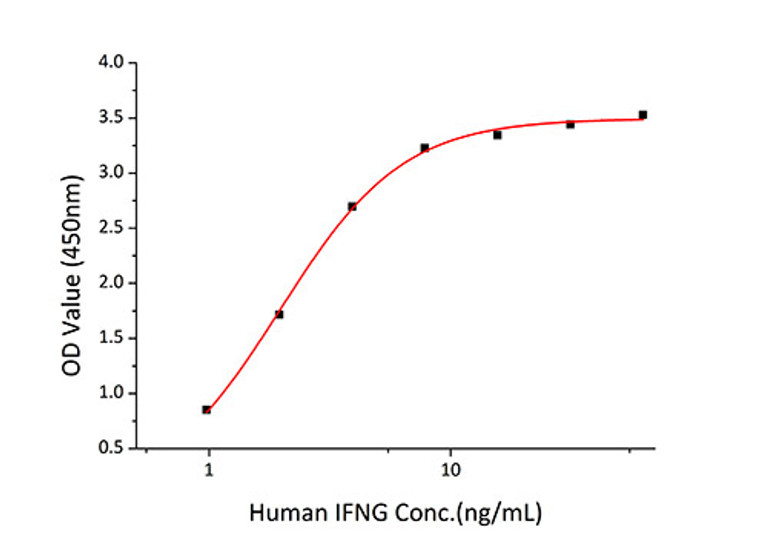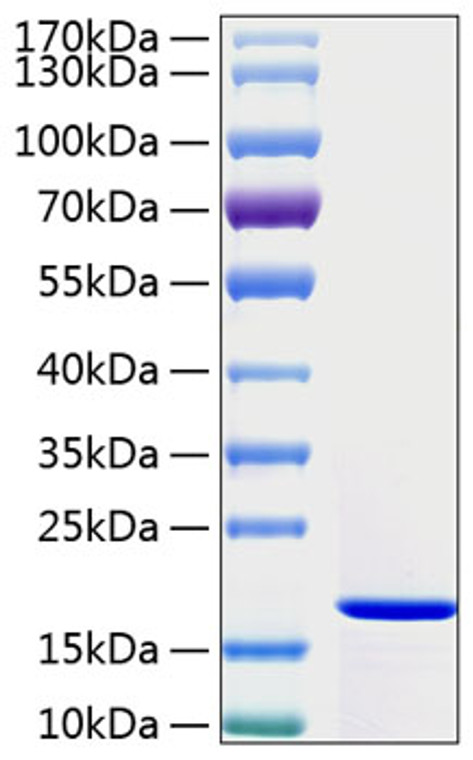| Host: |
E. coli |
| Reactivity: |
Human |
| Note: |
STRICTLY FOR FURTHER SCIENTIFIC RESEARCH USE ONLY (RUO). MUST NOT TO BE USED IN DIAGNOSTIC OR THERAPEUTIC APPLICATIONS. |
| Short Description: |
Active Recombinant-Human IFN-gamma-No tag protein was developed from e. coli and has a target region of No tag. For use in research applications. |
| Formulation: |
Lyophilized from a 0.22 Mu m filtered solution of PBS, pH 7.4. Contact us for customized product form or formulation. |
| Immunoreactivity: |
Measured by its binding ability in a functional ELISA. Immobilized Human FNGR1/CD119 at 1 Mu g/mL (100 Mu L/well) can bind Human IFNG with a linear range of 0.98-1.97 ng/mL.2. Measured in a cytotoxicity assay using HT-29 cells. The ED50 for this effe |
| Gene Symbol: |
IFNG |
| Gene ID: |
3458 |
| Uniprot ID: |
IFNG_HUMAN |
| Immunogen Region: |
Gln24-Gln166 |
| Immunogen: |
Recombinant Human Interferon Gamma Protein is produced by E. coli expression system. The target protein is expressed with sequence ( Gln24-Gln166) of human Interferon Gamma (Accession #NP_000610.2). |
| Tissue Specificity | Released primarily from activated T lymphocytes. |
| Post Translational Modifications | Proteolytic processing produces C-terminal heterogeneity, with proteins ending alternatively at Gly-150, Met-157 or Gly-161. |
| Function | Type II interferon produced by immune cells such as T-cells and NK cells that plays crucial roles in antimicrobial, antiviral, and antitumor responses by activating effector immune cells and enhancing antigen presentation. Primarily signals through the JAK-STAT pathway after interaction with its receptor IFNGR1 to affect gene regulation. Upon IFNG binding, IFNGR1 intracellular domain opens out to allow association of downstream signaling components JAK2, JAK1 and STAT1, leading to STAT1 activation, nuclear translocation and transcription of IFNG-regulated genes. Many of the induced genes are transcription factors such as IRF1 that are able to further drive regulation of a next wave of transcription. Plays a role in class I antigen presentation pathway by inducing a replacement of catalytic proteasome subunits with immunoproteasome subunits. In turn, increases the quantity, quality, and repertoire of peptides for class I MHC loading. Increases the efficiency of peptide generation also by inducing the expression of activator PA28 that associates with the proteasome and alters its proteolytic cleavage preference. Up-regulates as well MHC II complexes on the cell surface by promoting expression of several key molecules such as cathepsins B/CTSB, H/CTSH, and L/CTSL. Participates in the regulation of hematopoietic stem cells during development and under homeostatic conditions by affecting their development, quiescence, and differentiation. |
| Protein Name | Interferon GammaIfn-GammaImmune Interferon |
| Database Links | Reactome: R-HSA-877300Reactome: R-HSA-877312Reactome: R-HSA-8877330Reactome: R-HSA-8950505Reactome: R-HSA-9732724 |
| Cellular Localisation | Secreted |
| Alternative Protein Names | Interferon Gamma proteinIfn-Gamma proteinImmune Interferon proteinIFNG protein |
Information sourced from Uniprot.org
12 months for antibodies. 6 months for ELISA Kits. Please see website T&Cs for further guidance













